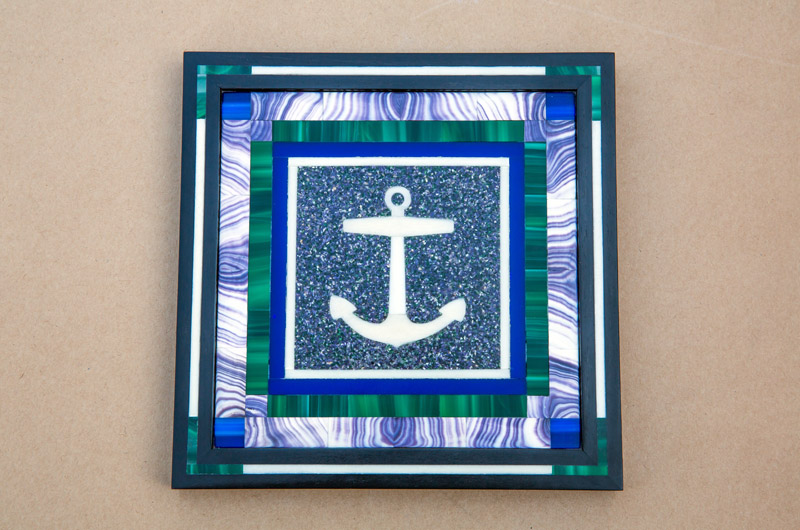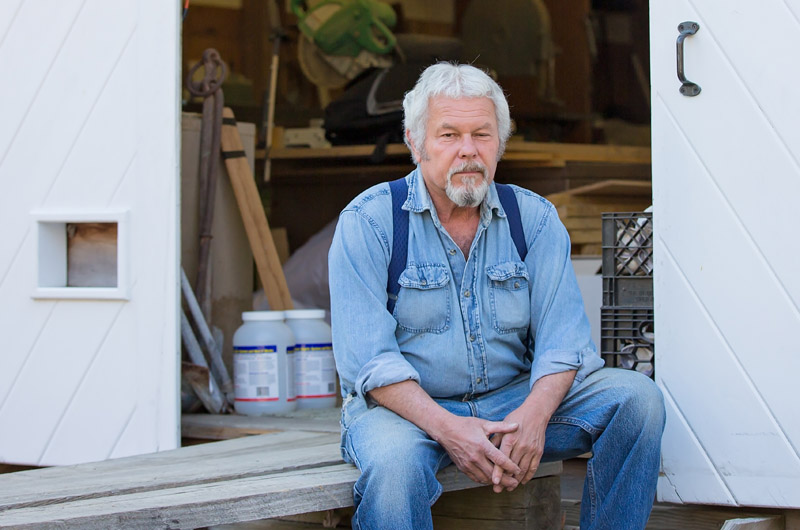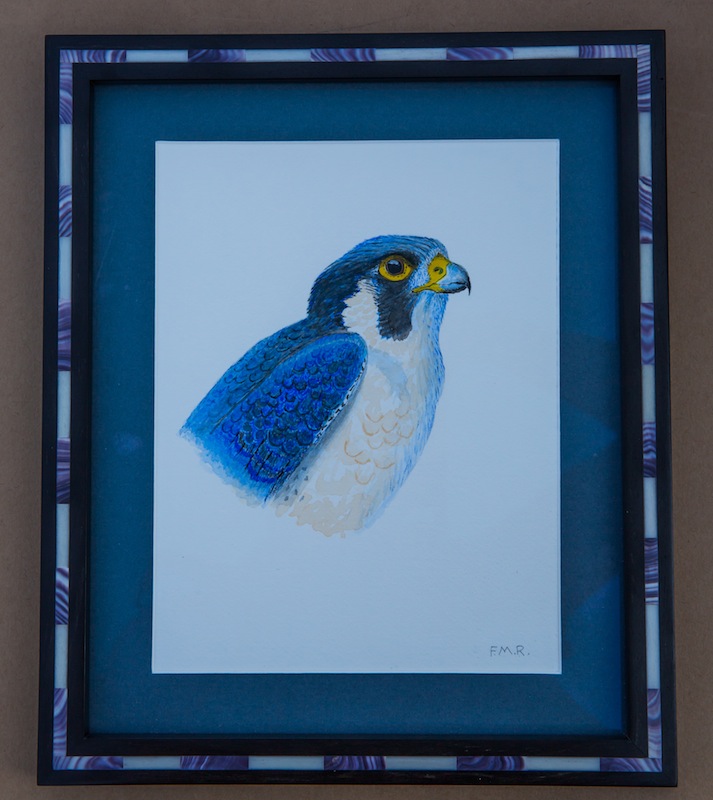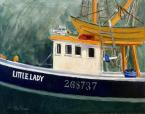Frank Rapoza likes to take his summers off. In mid June, the West Tisbury artist and boat builder will move out of his home and onto his boat, both of which he built. He will shut down his workshop, rent out his property for two months and sail to Cuttyhunk.

“I live on my boat and don’t have a car,” he said. “I walk or ride my bike and I fish, so my expenses aren’t a lot.”
He won’t work and he won’t create art. This will be about recharging his batteries.
Mr. Rapoza began his career as a boat builder right out of high school, apprenticing first in South Dartmouth and then in Mystic, Conn. In 1978, Bob Douglas brought him to the Vineyard to work on his boats, the Violet and the Raider, and he’s been here ever since, dividing his time between boat building and carpentry with Holmes Hole Builders.
In 2012, Mr. Rapoza began producing wampum mosaics on rectangular and square-shaped panels, using wampum shells, translucent yellow toenail shells (anomiidae) and other materials collected on the beach. He initially drew inspiration from religious wampum mosaics by Manny Sarmento, the former Nashawena island caretaker, who displayed his work in the church on Cuttyhunk.

Mr. Rapoza came to art later in life, but he is definitely making up for lost time.
“I bought enough wampum shells to last me 15 years,” he said. “I didn’t want this thing to take off and then all of a sudden have to go around and look for shells.”
The process by which he produces his work is arduous — he spends more than 50 hours on each piece — but the physical demands of his other professions provided good training. “I’d rather be doing this in my later years than be outside in the winter doing carpentry or working on a boat,” he said.
Over the years, Mr. Rapoza has standardized the process by which he fabricates the mosaics after an initial haphazard approach. “I didn’t want to ask anybody about the process because the people who make jewelry, for example, are a little protective about it. I bought the equipment and made mistakes to figure it out, and that was part of the fun.”
The process begins by taking three big cuts from each shell, including one from its blue part, which Mr. Rapoza then runs through a water-fed band saw. He grinds them flat and squares them off on a diamond wheel that is also water-fed. Finally, using a wet diamond ring saw he cuts the pieces down to size.
“All the pieces have to be wet or else it creates too much heat and cracks the shell,” he said.
For the other design elements, he crushes toenail shells, stained glass and other materials and infuses them with resin. The crushed material is then spread over the panel’s surface and ground flush to represent colorful skies and sunsets. The mosaics are then framed with ebony that Mr. Rapoza sourced from a shipwreck off the coast of Cuttyhunk.
“The Dolphin wrecked in 1854 and over the years as it broke up the big storms would push the logs ashore,” he said. “And because the frame comes from a shipwreck it brings the piece together.” Mr. Rapoza buys the wood from Cuttyhunkers who have collected it from the shoreline of their small island.
The frames are then secured at the corners with pins made from a swordfish bill. “It helps lock the corner in and adds a little something different to the frame,” he said.
Mr. Rapoza has sold 47 mosaics in the last three years, about 75 per cent of what he’s produced so far, a great start by any measure. But he is also well aware of the practical challenges associated with being an artist. When he returns from Cuttyhunk in the fall, he will return to Holmes Hole Builders, spending the season working as a carpenter to acquire capital to cover the cost of equipment and other expenses.
Scenery on and around Martha’s Vineyard informs his art. One piece depicts the sun setting over Menemsha Harbor from the perspective of a boater approaching from the Elizabeth islands. Other seascapes include Lucy Vincent Beach scenes. Among his still life subjects are anchors, arrowheads, hooks and three-leaf clovers. He likes to base his work on the familiar, and believes that this could be the key to his longevity as an artist. “My customers feel connected to work that shows places they’ve lived or parts of the Island they’ve seen before,” he said.
One couple commissioned a star as a gift, but before the piece was given away they became so attached they had trouble parting with it.
“It was in their house for a long time and they fell in love with it, so they had me do another one for them,” he said.
Later this summer, when Mr. Rapoza returns to the Island, he will participate in two shows for which his work is already prepared: the Labor Day Artisans Festival and the Thanksgiving festival, both at the Agricultural Hall in West Tisbury.
As for this summer, he plans to mostly just work on his tan, which is sure to benefit his work.
“I enjoy relaxing for two months and am really energized when I come back in the fall.” To see more of Frank Rapoza’s work, visit his artist page, Frank Rapoza Wampum Mosaics, on Facebook.









Comments (15)
Comments
Comment policy »